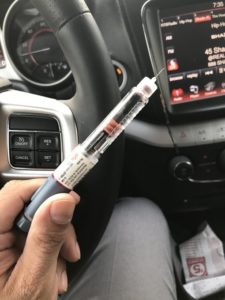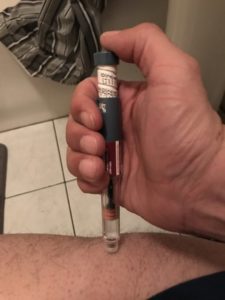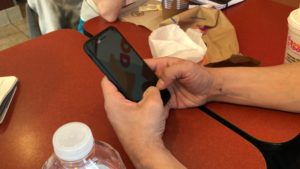Longitudinal Research:
Gaining a Holistic Understanding of the Patient Journey
With the importance of understanding the patient journey increasing, and the definition of the journey itself expanding (to include diagnosis, treatment selection, introduction and training), we have more opportunity than ever to positively impact the experience and outcomes. To make sure we do so effectively, we need to understand the comprehensive journey—not just a snapshot in time. Additionally, we need to understand the pivotal moments, no matter when and where they occur. This understanding can prove challenging, as timelines and logistics do not always lend themselves to multiple in-context encounters with end-users, which require a level of planning that might not even be feasible.
In the past few years, Insight has been designing and executing more longitudinal studies to help better understand an experience or process over time. We are here with Carolyn Rose, Insight’s director of research and strategy to more fully understand the methods and value of these types of studies.
First off Carolyn, in big picture terms, how would you define longitudinal research and the value it provides?
“I think of longitudinal research as research that’s being conducted over an extended period of time. The value of this is understanding how things may change over time and/or to get insight into a particular scenario or circumstance that may happen over a period of time that you can’t necessarily plan for. In this way, longitudinal research enables a more comprehensive understanding of an experience.”
So in what situations does it make sense to use longitudinal research methods?


“I think the situations where it make sense are linked to the value, when you’re trying to understand behavior or attitudinal changes over time and/or you’re trying to understand what we sometimes call “moment-based” behaviors or attitudes that are not necessarily planned for. We have a great example of that—a project we very recently completed for a combination product company. We were hoping to understand the unique challenges associated with administering a medication outside of the home. In this instance, you couldn’t necessarily plan for that, as injections are dependent on a number of factors including how one’s feeling and plans for the day. Longitudinal research allowed us to better understand these specific moments that would otherwise be difficult to ascertain. We’re also running a project where we’re looking to understand learning over time to make an assessment on the impact of different training modalities. So for example… let’s say you’ve just started a new self-administered treatment regimen. As a patient, I’m going to be trained on this, hopefully by an HCP, in a controlled environment. I have a clinical interaction and I’m guided through a process—then I go home and maybe a week later I need to administer this treatment and it’s kind of like, ‘now what?’ You’re able to get a sense for recall, retention rates, the extent to which training was effective and you can imagine how that becomes really interesting—when we’re now trying different training modalities. Whether it’s a video, on-board guidance within the device, or an IFU, we can start to understand the impact that that has on early learning as well as adherence, essentially learning proper technique over time.”
And what are some of the tools being used to make data collection more effective? Traditionally “diary studies” were good with journals and cameras, now people are using digital tools like Alexa to help, what tools are you employing at Insight?

“First off, I think it’s important to note that technology is a means to an end. We design a study to best address client needs and research goals, then determine which tools will most effectively enable that approach. Having said that, I think what we found to be most useful for longitudinal engagements are research-specific apps. These are apps that are custom created based on our specific research design and are specific to each study. They are then utilized by respondents to record events and upload content (be it text, photo, video, etc.) in a systematic way, while maintaining the flexibility required. These apps are so valuable because we would be hard-pressed to find a situation where someone doesn’t have their phone on them and it really enables us to get a glimpse of what’s going on wherever they happen to be. Now we’re able to leverage technology to streamline that process significantly compared to older methods and, I think, get better data. So particularly for those research projects where you’re looking to understand a particular situation that you can’t plan for, like I mentioned, the apps have proven really helpful. We’ve had people send us information while they’re in church, out to eat, in the car, sleeping, anything and everything, so you really start to get the sense that you’re with them 24/7. Home-based technologies like Alexa are also helpful for more focused studies, but for discovery-oriented research these tend to be a bit limiting, solely because they require someone to be at home.”
Any final comments on the value and the future of longitudinal research engagements?
“There’s a lot of valuable information to be gathered relative to the patient journey in general, and specifically with understanding how people’s attitudes and behaviors evolve over time. Particularly as we see second and third generation devices, you think ‘ok, we’ve optimized the user experience associated with the device, now how do we ensure people are using it in the way we intended?’ Our clients are continuing to sponsor a great deal of work in this area and I would expect that to continue to grow and be more effective with the incorporation of longitudinal methods.”
